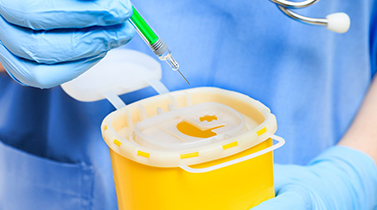

1. Fire prevention In case of fire, cut off the power i […]
1. Fire prevention
In case of fire, cut off the power immediately and remove flammable materials. Then, take appropriate methods to fight the fire according to the nature of the burning material and the fire. When organic matter catches fire, water is usually not used for fire fighting, because general organic matter is insoluble in water or can react more violently when encountering water and cause greater accidents. Small fires can be extinguished with a damp cloth or asbestos cloth. When the fire is large, a fire extinguisher should be used.
2. Explosion proof
During normal pressure operation, heating or reaction cannot be carried out in a closed system, and the reaction device should be checked frequently for blockage. If blockage is found, stop heating or reaction, and continue heating or reaction after removing blockage.
During vacuum distillation, flat-bottomed flasks, conical flasks, thin-walled test tubes, etc. cannot be used as receiving flasks or reaction flasks.
No matter it is atmospheric distillation or vacuum distillation, the liquid cannot be evaporated to dryness, so as to avoid local overheating or the generation of peroxides and explosion.
3. Anti-poisoning
In case of poisoning, the poisoned person should be allowed to leave the scene in time and go to a well-ventilated place. The severe case should be sent to the hospital in time.
4. Anti-burn
Skin contact with high temperature, low temperature or corrosive substances may be burned. To avoid burns, it is best to wear rubber gloves and protective glasses when touching these substances. When burns occur, the following requirements should be handled.
(1) When being burned by alkali, first rinse with plenty of water, then with 1%~2% acetic acid or boric acid solution, then rinse with water, and finally apply scald cream.
(2) When being burned by acid, first rinse with plenty of water, then with 1% sodium bicarbonate solution, and finally apply scald cream.
(3) When burned by bromine, rinse with plenty of water immediately, scrub with alcohol or wash with 2% sodium thiosulfate solution until the burn is white, and then apply glycerin or cod liver oil ointment to massage.
(4) After being scalded by hot water, generally apply safflower oil on the affected area, and then rub the scald cream.
(5) Once the above substances are splashed into the eyes, rinse them with plenty of water and go to the hospital for treatment in time.
5. Cut resistant
Glass instruments are mainly used in organic experiments. When using, the most basic principle is: Do not apply excessive pressure to any part of the glass instrument. After a cut occurs, remove the glass fragments from the wound, wash the wound with normal saline, apply red syrup, and wrap it with gauze. If the static (arterial) blood vessel is cut and the bleeding does not stop, stop the bleeding first. The specific method is: tie the wound with a bandage about 5-10cm above the wound or pinch it with both hands, and then treat it or send it to the hospital.
6. Electrical Safety
In the experiment, the plug on the electrical equipment should be connected to the socket before turning on the power switch. Do not use wet hands or hold wet objects to plug or unplug. Before using the electrical appliance, check whether the wiring is connected correctly. The inside and outside of the electrical appliance should be kept dry and free of water or other solvents.
http://www.chinabiolife.com/
